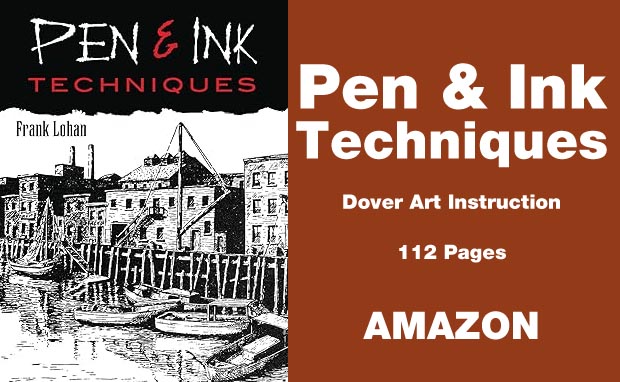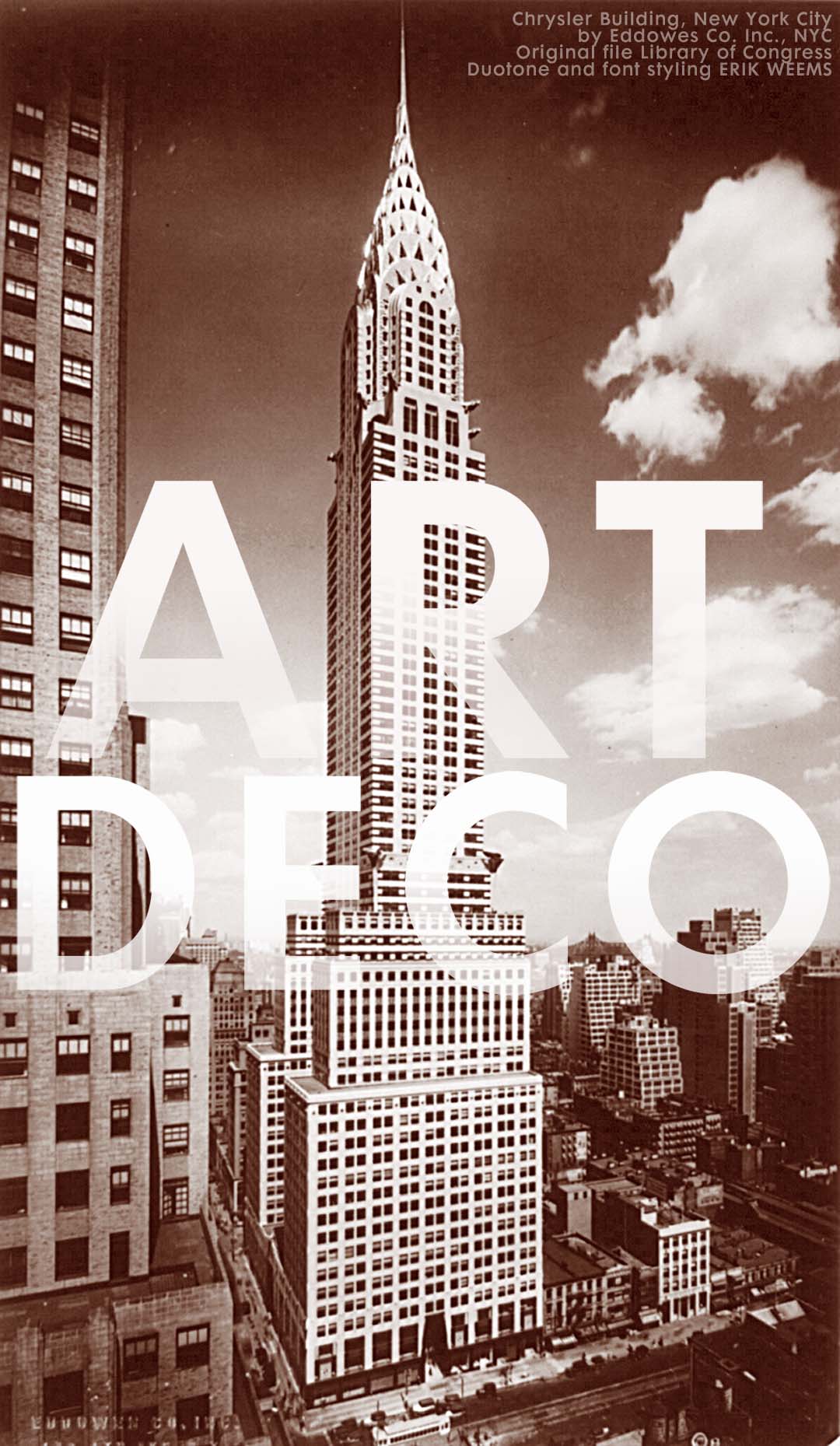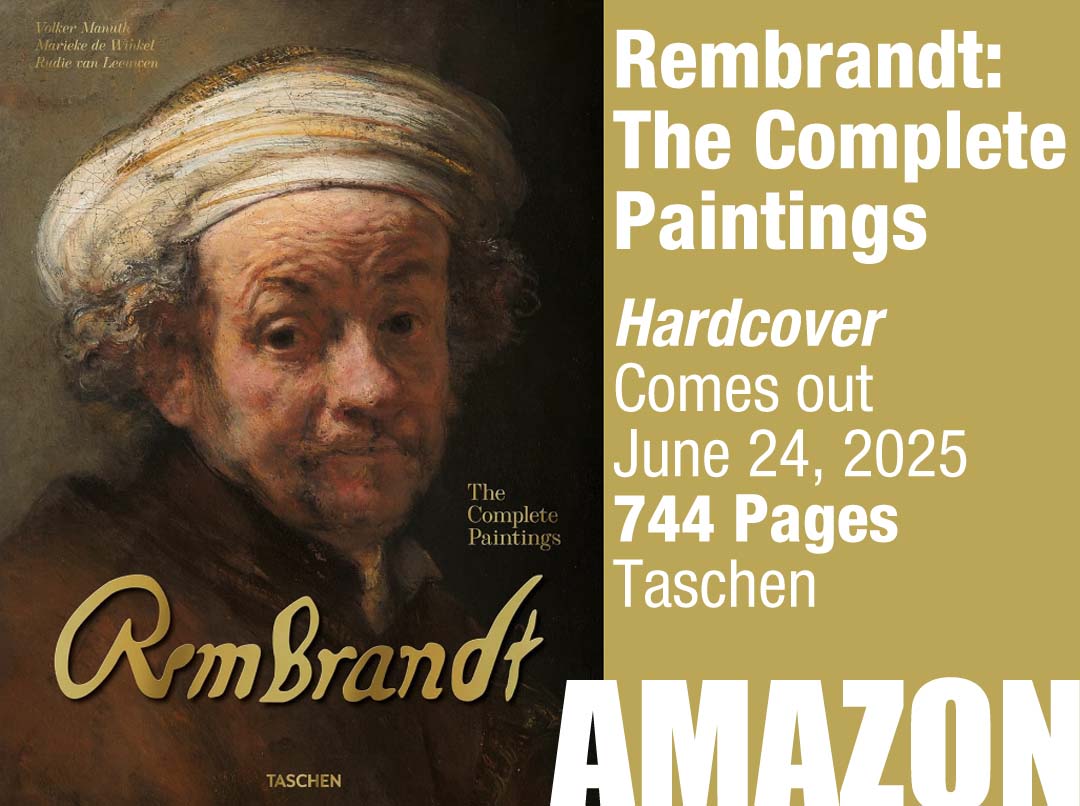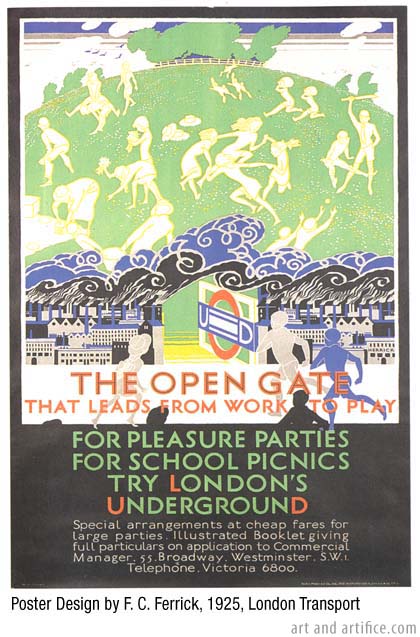Art and Artifice
Prime Examples of Art Deco
-
Chrysler Building, New York City: This is an iconic example of Art Deco architecture that features a unique combination of geometric shapes, intricate details, and sleek lines. Its spire is made of stainless steel, and the lobby is decorated with famous murals and mosaics.
-
Tamara de Lempicka's Portraits: Tamara de Lempicka is a prominent Art Deco artist who is well-known for her particular style (much imitated in some areas) elegant and sophisticated portraits. Her paintings feature sharp angles, bold colors, and stylized forms that express the glamour and sophistication of the Art Deco era.
-
The Empire State Building, New York City: This is one of the world's most famous skyscrapers for not only King Kong making a (temporary_ home there, but for its own dominating palce in the New York City skyline. The building features sleek lines, intricate details, and geometric shapes that perfectly capture the Art Deco style.
-
The Radio City Music Hall, New York City: This features a beautiful blend of geometric shapes, bright colors, and intricate details. The venue is renowned for its stunning interiors, which feature murals, mosaics, and other decorative elements that show off the style of the Art Deco era.
-
The Hoover Building, London: Originally built as a factory for the Hoover vacuum company, this building features sleek lines, bold colors, and geometric shapes that help define the Art Deco style. Today, the building has been converted into apartments and is considered one of London's most important examples of Art Deco architecture.
What is Art Deco?
Art Deco is a decorative and architectural style that emerged in the 1920s and 1930s which demonstrated the impact of emerging technologies like aerospace design for planes and automobiles. It is characterized by a bold and streamlined aesthetic that incorporates geometric shapes, bright colors, and intricate designs.
Art Deco also reflected Cubism, Futurism, and Constructivism, and was particularly made known via the Art Deco Exposition in Paris in 1925.
The Art Deco style was used in a wide range of mediums, including architecture, fashion, furniture, and art, and was known for its emphasis on luxury and modernity. Art Deco still influences the style of contemporary design.
Art Deco and Film
"...although modernistic set designs and architecture had featured in avante-garde European films throughout the 1920s, it was not until towards the end of the decade that Art Deco began to enter the stylistic vocabulary of American film-makers. The Art Deco idiom in film, however, tended to carry negative associations, as in the use of Modernist or modernistic surroundings as a sign for the sinister (this was an inheritance from European cinema, from such films as Marcel L'Herbier's L'Inhumaine and Fritz Lang's Metropolis). Robert Mallet-Stevens was one of the keenest European Modernists to promote visual modernity in the cinema, but in his 1928 book Le Decor moderne au cinema, he lamented that the style was used 'exclusively for places of debaucher: night-clubs or boudoirs of the demi-monde, which would allow one to suppose that the admirable efforts and researches of painters, decorators, and architects are good to surround drunkards or those of ill-repute."
In American cinema, Art Deco kept its disturbing edge. It was used to display the decadence of independent women (Greta Garbo in The Single Standard, Jean Harlow in Dinner at Eight) or exotic bathrooms (Dynamite, 1929) and bedrooms (The Easiest Way, 1931), while Paul Fejos used stylistic sunbursts and a giant skyscraper mural to create a zig-zag Art Deco interior to the night-club in his 1929 film Broadway. In addition to suggesting hedonistic luxury, the style was used in industrial or big-business settings to symbolize financial power, the male world of work, and often the perceived unsuitability of women in such an environment (Big Business Girl, 1931 and Female, 1933).
Nevertheless, the use of the style as material expression of luxury , even though a decadent one, would have helped establish Art Deco in the hearts and minds of the vast movie-going American public. Women's magazines regularly provided patterns enabling readers to copy the fashionable dress of their favorite film stars, suggesting that cinema was an important taste-maker, providing inspirational role models for its audience. But it was the environment in which these movies were shown which, as much as the films themselves, enhanced the exotic allure of the luxury and decadence of Art Deco. It was inside these buildings that architects of the period could indulge themselves and their public in an orgy of decorative excess. In many theatres, the audience were required to suspend their sense of reality and belief for the building as well as for the film."
From the Book Art Deco Style, by Bevis Hillier and Stephen Escriptt, pages 72-73. Published by Phaidon Press, 1997.
AMAZON - Art Deco Style by Bevis Hillier (1997-08-28)
Friday, June 29, 2007
ART DECO ON FRIDAY
[Below] A 1925 poster by F. C. Ferrick.
View enlargement of poster image
Art Deco
"Summer Beauty Issue" Vogue Magazine May 1941
Vogue May 1, 1913 - George Wolfe Plank cover art
Conte Verde Art Deco Poster 1932
Cover to Vogue Magazine by George Plank 1912
Vogue Cover illustration by George Plank 1917
Albert Staehle Art Deco Poster 1939
Deco design of 1930 by Oliver Bernard - Strand Palace Hotel
F. C. Ferrick Poster 1925 Art Deco
January 15, 1919 Vogue Magazine cover by Lepape
Randie art - Vogue Magazine Cover
Carl Erickson Vogue November 1930 Cover


Updated July 2020



